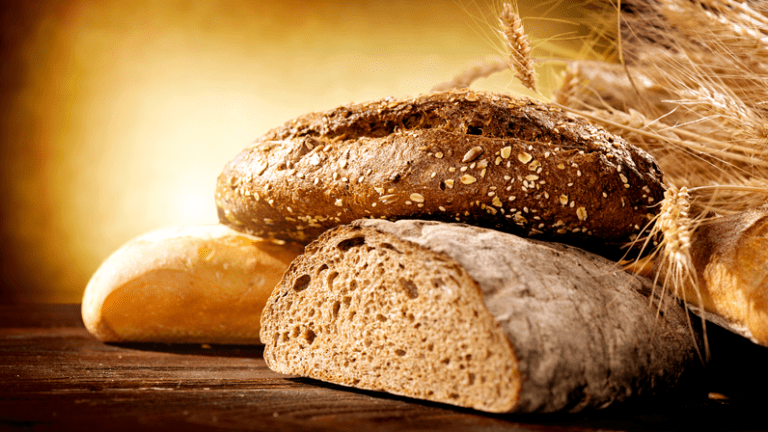If your dreams are haunted by bread and rice, you’re not alone. The term ‘carb’ has become a taboo word in the American household, largely due to the cyclical nature of the popularity of the Atkins diet. People see carbs, and they automatically think “unhealthy” and “weight gain.”
We’ve put together some facts to help separate the hype from the truth about carbohydrates.
What are carbohydrates?
Your body uses carbohydrates (carbs) to make glucose, which is the fuel that gives you energy and helps keep you going. Glucose is the main energy source for your brain and vital organs. All macronutrients can be converted to glucose (not necessarily efficiently) and this process is a key survival mechanism. Your body will catabolize your muscle to convert to glucose to keep your brain and heart functioning, which ultimately lowers your metabolism and is a main reason why low calorie and low carbohydrate diets are not good for long-term success.
Your body can use glucose immediately or store it in your liver and muscles for when it is needed. You can find carbohydrates in the following:
- Fruits
- Vegetables
- Breads, cereals, and other grains
- Milk and milk products
- Foods containing added sugars (e.g., cakes, cookies, and sugar-sweetened beverages)
Healthier foods higher in carbohydrates include ones that provide dietary fiber and whole grains as well as those without added sugars. What about foods higher in carbohydrates such as sodas and candies that also contain added sugars? Those are the ones that add extra calories but not many nutrients to your diet, and thus the ones you to try to avoid or minimize.
What are the types of carbohydrates?
There are two main types of carbohydrates:
- Complex carbohydrates
- Simple carbohydrates
Complex Carbs
Dietary Fiber
You may have seen dietary fiber on the label listed as soluble fiber or insoluble fiber. Soluble fiber is found in the following:
- Oatmeal
- Oat bran
- Nuts and seeds
- Most fruits (e.g., strawberries, blueberries, pears, and apples)
- Dry beans and peas
Insoluble fiber found in the following:
- Whole wheat bread
- Barley
- Brown rice
- Couscous
- Bulgur or whole grain cereals
- Wheat brans
- Seeds
- Most vegetables
- Fruits
Which type of fiber is best?
Both! Each has important health benefits so eat a variety of these foods to get enough of both. You’re also more likely to get other nutrients that you might miss if you just chose 1 or 2 high fiber foods.
How much dietary fiber do I need each day?
Most Americans greatly under consume dietary fiber. Breads, rolls, buns and pizza crust made with refined flour are poor sources of dietary fiber, but currently contribute to a large portion our diets. To meet the recommendations for fiber, most people need to increase the consumption of beans, peas, other vegetables, fruits and whole grains, and other foods with naturally occurring fiber. It’s recommended that the average adult gets 25-35 grams of dietary fiber each day.
Try these tips to jumpstart your intake of dietary fiber:
- Choose whole fruits more often than fruit juice. Fresh, frozen, or canned—it doesn’t matter— they all count!
- Try to eat two vegetables with your evening meal.
- Keep a bowl of veggies already washed and prepared your refrigerator—try carrots, cucumbers, or celery for a quick snack.
- Make a meal around dried beans or peas (also called legumes) instead of meat.
- Choose whole grain foods more often. Take a look at the “whole grains buzzwords list” below to help you decide. A good guide is to make at least ½ of your grain choices be whole grains.
- Start your day with a whole grain breakfast cereal low in added sugar. Top your cereal with fruit for even more fiber. While bananas may come to your mind first, you can add even more variety by also trying sliced peaches or berries. You can often find these fruits year-round in the frozen foods section of your grocery store.
Whole Grains
Whole grains are a good source of fiber and nutrients. Whole grains refer to grains that have all of the parts of the grain seed (sometimes called the kernel). These parts of the kernel are called the bran, the germ, and the endosperm. If the whole grain has been cracked, crushed, or flaked (as in cracked whole grain bread or flake cereal), then the whole grain must still have about the same proportions of bran, germ, and endosperm to be called a whole grain.
When whole grains are processed, some of the dietary fiber and other important nutrients are removed. A processed grain is called a “refined” grain. Some refined grain products have key nutrients, such as folic acid and iron, which were removed during the initial processing and added back. These are called enriched grains. White rice and white bread are enriched grain products. Some enriched grain foods have extra nutrients added. These are called fortified grains.
Simple Carbohydrates
Simple carbohydrates include sugars found naturally in foods such as fruits, vegetables milk, and milk products. Simple carbohydrates also include sugars added during food processing and refining. What’s the difference? In general, foods with added sugars have fewer nutrients than foods with naturally-occurring sugars. Another main difference is rate of absorption of the different sources of sugars and their effect on insulin. See the Glycemic Index for a rating system of how quickly various foods enter your system and which ones may cause insulin spikes.
How can I avoid added sugars?
One way to avoid these sugars is to read the ingredient lists on food labels.
Look for these ingredients as added sugars:
- Brown sugar
- Corn sweetener
- Corn syrup
- Dextrose
- Fructose
- Invert sugar
- Lactose
- Maltose
- Malt Syrup
- Molasses
- Fruit juice concentrates
- Glucose
- High-fructose corn syrup
- Honey
- Raw sugar
- Sucrose
- Sugar
- Syrup
If you see any of these in the ingredient list, you know the food has added sugars. The closer to the top of the ingredient list, the more of that sugar is in the food.
Other tips for avoiding added sugars include:
- Choose water instead of sugar-sweetened sodas.
- Choose 4 fluid ounces (1/2 cup) of 100% fruit juice rather than a fruit drink.
- Have a piece of fruit for dessert and skip desserts with added sugar.
- Choose breakfast cereals that contain no or less added sugars.
How useful was this post?
Click on a star to rate it!
Average rating 0 / 5. Vote count: 0
No votes so far! Be the first to rate this post.



